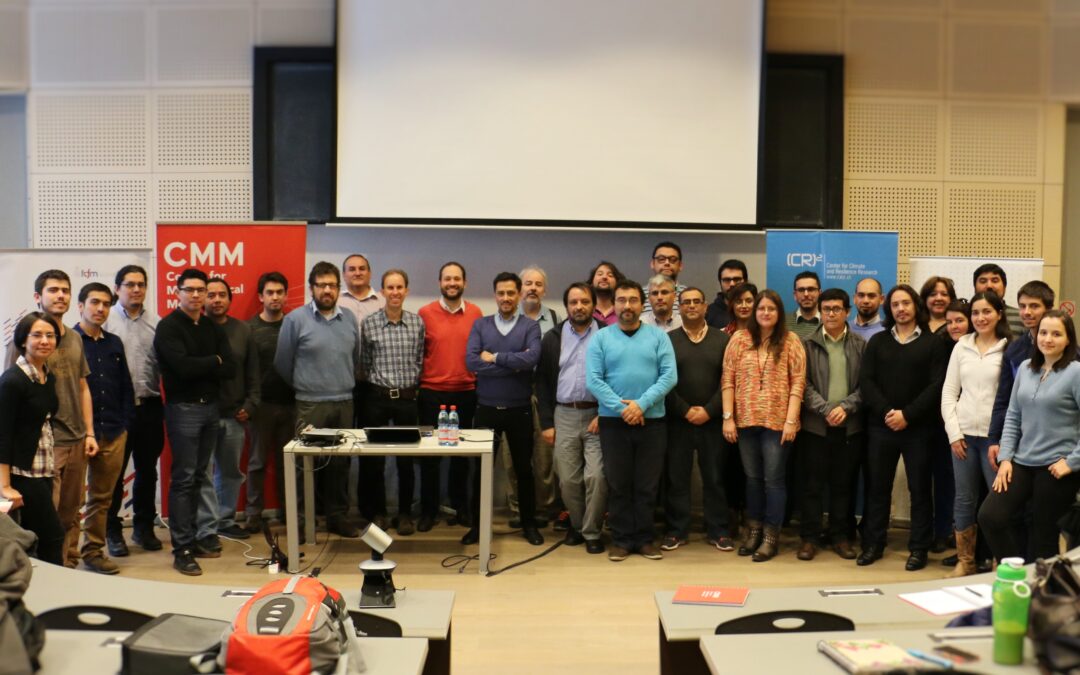Specialists from The Ministry of Public Works (MOP) and academics from Universidad de Chile gathered to understand how the super-computing capacity installed in the university can support the planning and construction of infrastructure.
From march through september, at least seven natural disasters spotlights have been counted. And the number of this kind of catastrophes is increasing year after year, mainly impulsed by climate change. For this reason, it is key considering in the planning of public infrastructure the effect of floods, draughts, movements in the zero degree isotherm and other factors that could destroy bridges, leave communities without access to water or contribute to the wear and tear of other constructions, among other consequences.
To do this, it is required the processing of big volumes of data linked to climate, human migration, contamination, seas, natural environment and other factors. It is there where a supercomputer like Leftraru, the most powerful in Chile owned by the National Laboratory for High Performance Computing of the Centre for Mathematical Modeling (CMM) of Universidad de Chile, can play a relevant role, because it allows the transformation of this data into very useful information.

To process important volumes of data linked to climate a supercomputer like Leftraru, the most powerful in Chile is key. The cluster is owned by the Laboratory for High Performance Computing of the Center for Mathematical Modeling of Universidad de Chile.
In order to analyse the potential of this machine on projects of public works, a group of nearly 50 professionals of the Ministry for Public Works gathered with academics from CMM and from the Center for Climate and Resilience Research (CR)2, both from Universidad de Chile, in the First Workshop on Mathematical Modeling CMM-MOP.

Gines Guerrero, director of the NLHPC, speaking during the event.
This workshop is a first result of this agreement that will allow the use of the power of Leftraru and implement projects of research with scientists of the university to analyse the consequences of climate change on infrastructure projects. During three days, the participants addressed problematics such as hydrological and climatic modelling, oceanography, forecast and atmospheric contamination which were combined with high performance computing, the use of supercomputer Leftraru and practical uses.

The workshop involved academics and authorities of the Ministry for Public Works.
“We don’t have all the answers here at the university and suspect that the Government has big challenges», affirmed Jaime San Martin, Scientific director of the NLHPC during the inauguration of the workshop, who added that «the State has muscle and this is the opportunity to make it grow».
“Making exchanges with the universities means a virtuous mix for science and government. It is important to our ministry to achieve these relationships. Take decisions based on studies is important», added Antonia Bordas, Port Works director of MOP.

This type of relationships is relevant for the observation of the effects of climate change and its repercussions on the planning of public infrastructure.
Reinaldo Fuentealba, Hydraulic Works director of MOP, emphasized that the challenge of this workshop is in development of capacities to face natural catastrophes, because «univeristies are for this: for the advancement in knowledge».
As closed Gines Guerrero, director of the NLHPC, “this is going in the direction to form advanced human capital for a modern State, that serves the growing challenges with which the Chilean society of the XXI century is demanding us».
Source: UChile News

